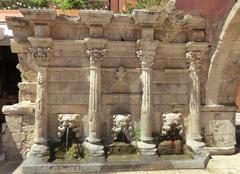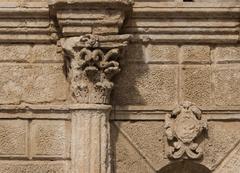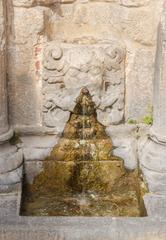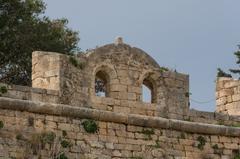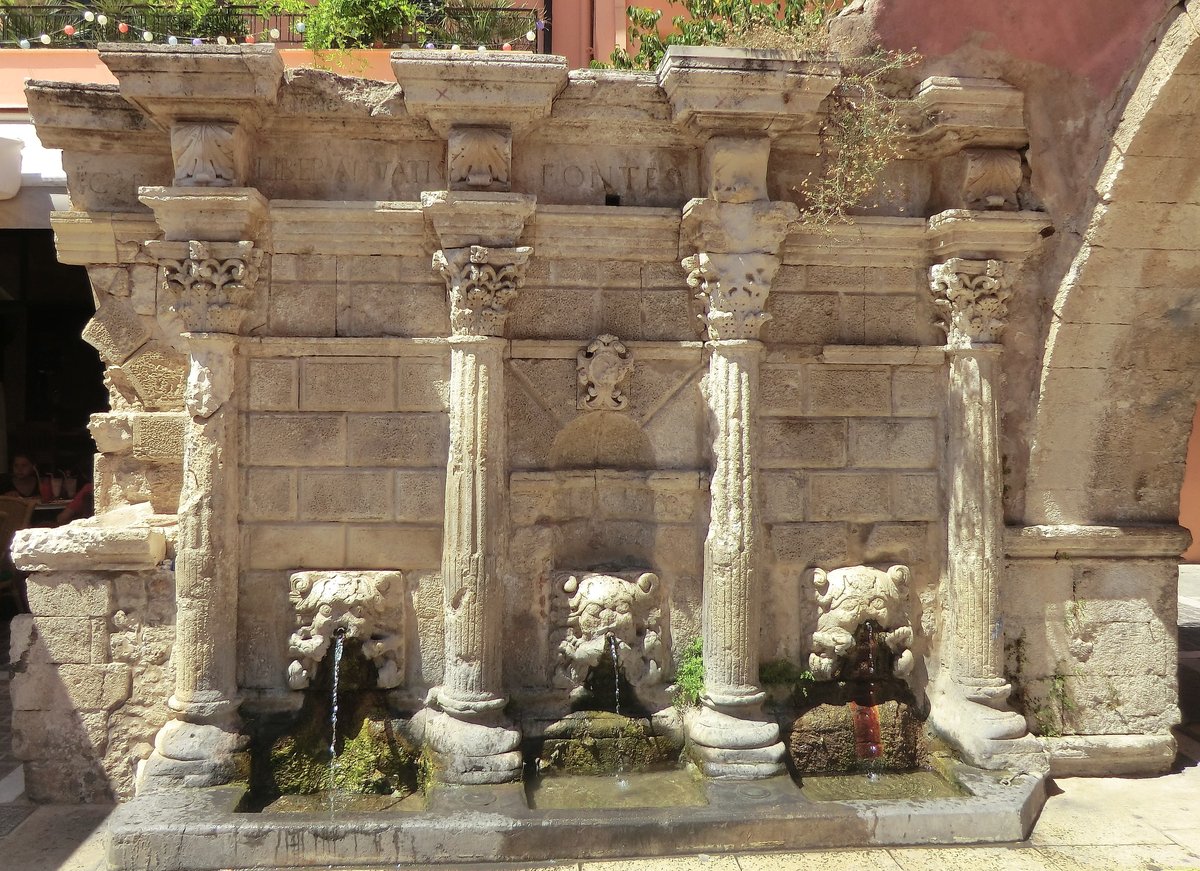
Guide to Visiting Plateia T. Petichaki, Rethymno, Greece
Publication Date: 18/07/2024
Introduction
Petichaki Square, or ΠΛΑΤΕΙΑ Τ. ΠΕΤΥΧΑΚΗ, is a vivid embodiment of Rethymno’s rich historical tapestry, reflecting the city’s ancient, medieval, Venetian, Ottoman, and modern eras. Located in the heart of Rethymno, Crete, this square is not just a geographical landmark but a cultural and social hub. From its origins during the Minoan civilization around 1600 BCE to its role during the Venetian and Ottoman periods, the square has evolved, preserving the essence of each era. Named after Titos Petichakis, a celebrated Cretan revolutionary, Petichaki Square today stands as a testament to the resilience and cultural diversity of Rethymno (Rethymno Guide). This guide aims to provide an in-depth look into the historical significance, architectural marvels, and practical visitor information for anyone planning to explore this captivating part of Crete.
Table of Contents
- Introduction
- Historical Background
- Cultural Significance
- Architectural Highlights
- Visitor Information
- Travel Tips
- Nearby Attractions
- Accessibility
- FAQ
- Conclusion
Historical Background
Ancient and Medieval Roots
Petichaki Square is situated in the heart of Rethymno, a city with a rich tapestry of history dating back to ancient times. Established during the Minoan civilization around 1600 BCE, Rethymno has been continuously inhabited since then. The city was an important center for trade and culture, benefiting from its strategic location on the northern coast of Crete.
During the Byzantine period, Rethymno flourished as a significant administrative and religious center. The city was fortified to protect against Arab invasions, and many of these fortifications can still be seen today. The Venetians, who ruled Crete from 1204 to 1669, further enhanced the city’s defenses and infrastructure. They constructed the Fortezza, a massive fortress that overlooks the city, and many other buildings that still stand today.
Venetian Influence
The Venetian period was a time of great prosperity for Rethymno. The Venetians invested heavily in the city’s infrastructure, building roads, aqueducts, and public buildings. They also introduced new architectural styles, which can still be seen in the city’s historic center. Petichaki Square itself is a product of this period, with its layout and many of its buildings reflecting Venetian design principles.
One of the most notable Venetian structures in the area is the Rimondi Fountain, located just a short walk from Petichaki Square. Built in 1626, the fountain features three lion heads from which water flows, a common motif in Venetian architecture. The fountain was a vital source of water for the city’s inhabitants and remains a popular attraction for visitors today.
Ottoman Era
In 1669, the Ottoman Empire conquered Crete, marking the beginning of a new chapter in Rethymno’s history. The Ottomans made significant changes to the city’s architecture and urban layout, many of which are still visible today. They converted several Venetian churches into mosques and built new structures, such as the Neratze Mosque, which now serves as a music conservatory.
Petichaki Square was an important public space during the Ottoman period, serving as a marketplace and a gathering place for the city’s residents. The square’s central location made it a hub of commercial and social activity, a role it continues to play today.
Modern History
The 19th and 20th centuries brought significant changes to Rethymno and Petichaki Square. In 1898, Crete gained autonomy from the Ottoman Empire, and in 1913, it was officially united with Greece. These events ushered in a period of modernization and development for the city.
During World War II, Rethymno was occupied by German forces, and the city suffered significant damage. However, Petichaki Square remained a focal point of the city’s social and commercial life. In the post-war period, the square was renovated and modernized, with new buildings and amenities added to meet the needs of the growing population.
Cultural Significance
Today, Petichaki Square is a vibrant and bustling part of Rethymno, reflecting the city’s rich cultural heritage. The square is surrounded by historic buildings, many of which have been carefully restored to preserve their original character. It is a popular destination for both locals and tourists, offering a wide range of shops, cafes, and restaurants.
The square is also a venue for various cultural events and festivals throughout the year. One of the most notable is the Rethymno Renaissance Festival, which celebrates the city’s Venetian heritage with music, theater, and dance performances. The festival attracts visitors from all over the world and is a testament to the enduring cultural significance of Petichaki Square.
Architectural Highlights
Petichaki Square is home to several notable buildings and landmarks that reflect the city’s diverse architectural heritage. One of the most prominent is the Loggia, a beautiful Venetian building that now houses the Rethymno Archaeological Museum. The Loggia was originally built in the 16th century as a meeting place for the city’s nobility and has been meticulously restored to its former glory.
Another important landmark is the Church of Our Lady of the Angels, also known as the Mikri Panagia. This church, located just off Petichaki Square, was built in the 17th century and is a fine example of Venetian ecclesiastical architecture. The church’s interior features beautiful frescoes and icons, making it a must-visit for anyone interested in religious art.
Visitor Information
Petichaki Square Visiting Hours
Petichaki Square is open to visitors 24/7. However, the surrounding shops, cafes, and restaurants typically operate from 9 AM to 11 PM.
Petichaki Square Tickets
Access to Petichaki Square is free. However, some of the historic buildings and landmarks, such as the Rethymno Archaeological Museum, may have an entrance fee.
Travel Tips
- Best Time to Visit: The square is lively throughout the year, but the best time to visit is during the spring and autumn when the weather is pleasant.
- Guided Tours: Consider joining a guided tour to learn more about the history and architecture of Petichaki Square and Rethymno.
- Photography: The square offers excellent photo opportunities, especially in the early morning or late afternoon when the light is soft.
Nearby Attractions
- Fortezza: This Venetian fortress offers stunning views of the city and the sea.
- Rimondi Fountain: A short walk from the square, this historic fountain is a must-see.
- Neratze Mosque: Now a music conservatory, this former mosque is a beautiful example of Ottoman architecture.
Accessibility
Petichaki Square is pedestrianized and accessible to visitors with mobility issues. However, the cobblestone streets may pose a challenge for some, so it’s advisable to wear comfortable shoes.
FAQ
Q: What are the visiting hours for Petichaki Square? A: Petichaki Square is open 24/7, but surrounding establishments typically operate from 9 AM to 11 PM.
Q: How much are tickets to Petichaki Square? A: Access to the square is free. Entrance fees may apply to some historic buildings and museums.
Conclusion
Petichaki Square is a microcosm of Rethymno’s rich and diverse history. From its ancient roots to its modern-day vibrancy, the square reflects the many influences that have shaped the city over the centuries. Whether you’re interested in history, architecture, or simply enjoying the local culture, Petichaki Square is a must-visit destination in Rethymno.
For more information on the history and attractions of Petichaki Square, you can visit the official Rethymno tourism website.
Call to Action
Stay updated with the latest information and tips for visiting Rethymno by downloading our mobile app, Audiala, and following us on social media. Don’t forget to check out other related posts on our site for more travel inspiration.
Summary and Final Thoughts
Petichaki Square in Rethymno is not merely a tourist destination but a living museum that encapsulates centuries of history and culture. From its ancient roots to its modern-day vibrancy, the square serves as a microcosm of Rethymno’s diverse heritage. Whether you’re captivated by historical narratives, architectural beauty, or the bustling social scene, Petichaki Square offers an enriching experience. The square remains accessible and welcoming, with no entrance fees and 24/7 availability, making it an essential stop for any visitor to Rethymno. By preserving its historical integrity while embracing modern cultural activities, Petichaki Square continues to be a focal point of Rethymno’s social and cultural life (Rethymno Guide). For those eager to delve deeper, guided tours and nearby attractions like the Fortezza and Rimondi Fountain offer additional layers of exploration. To stay updated and make the most of your visit, consider downloading the Audiala mobile app and following relevant social media updates.
Sources and Further Reading
- Visiting Petichaki Square in Rethymno, Greece - History, Tickets, and Tips (Rethymno Guide)
- Visiting Petichaki Square - History, Tips, and Must-See Attractions in Rethymno (Rethymno Guide)
